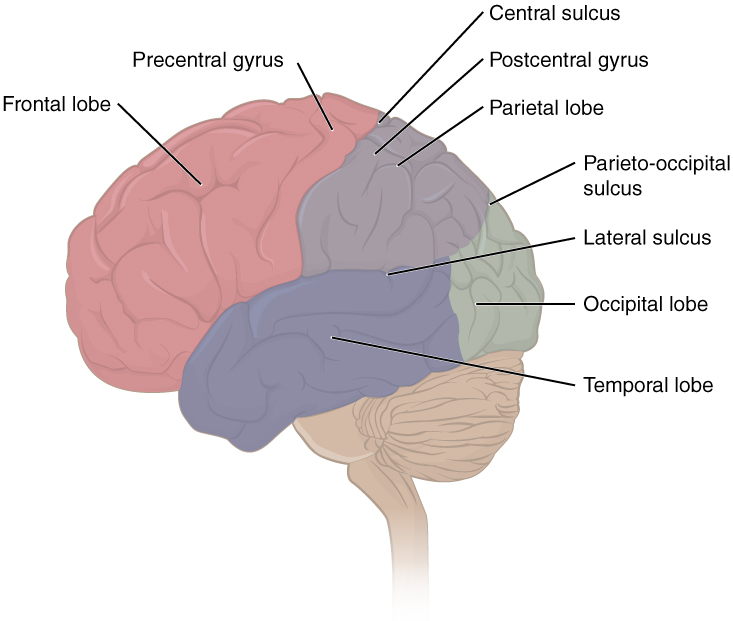Playlist
Show Playlist
Hide Playlist
Temporal Lobe
-
Slides 17 CerebralCortex BrainAndNervousSystem.pdf
-
Download Lecture Overview
00:01 Now, we come to the temporal lobe. What you need to understand here is first, the primary auditory cortex resides here. That is located right in through here. This is where we perceive audition or hearing. A lesion that’s unilateral in its location causes the affected individual to have difficulty localizing sound from opposite sound input. So if it’s on the left side, our ability to hear is diminished. But on the right side, everything is processing just fine. 00:45 It also causes a subtle loss of hearing overall. You should also understand the middle and inferior temporal gyri. Those are highlighted here in green. Here is the middle temporal gyrus. Here is the inferior temporal gyrus. These are important in the imprinting or establishment of long-term memory. If there are bilateral lesions of these gyri, this will produce memory impairment of past events. Here, we have a medial view of the brain. Our focus is on the parahippocampal gyrus of the temporal lobe. That is seen right in through here. 01:39 This is the area of the brain that’s involved in recent memories. If there are bilateral lesions of your parahippocampal gyri, this will result in anterograde amnesia. Another region of the temporal lobe that’s in the vicinity of the parahippocampal gyrus is the uncus shaded here in green. This is involved functionally in olfaction, smell. Bilateral lesions of the unci result in anosmia, inability to smell. Here, we’re looking at the occipitotemporal medial gyrus that is shaded here in green. What you need to remember about this region of the temporal lobe is it’s involved in face recognition. That allows us to identify individuals that we’ve had contact with. A lesion of this area would result in face blindness, so we’d be unable to recognize the faces of individuals. So, they would be like meeting that person for the first time over and over again. 03:01 Wernicke's area is an important region of the temporal lobe. That is shown here in this area. 03:10 This is important in the comprehension of language. 03:15 So, it allows us to make sense of what we hear and what we read. A lesion will damage our ability or inhibit our ability to comprehend language. As a result, an individual will have what is termed receptive aphasia. Another term for this is fluent aphasia. So, they have the motor control but the words they use would be like a solid mix. They don’t make sense but the words themselves are produced perfectly."
About the Lecture
The lecture Temporal Lobe by Craig Canby, PhD is from the course Cerebral Cortex.
Included Quiz Questions
Which of the following effects would be caused by a lesion in Wernicke’s area?
- Receptive aphasia
- Nonfluent aphasia
- Motor aphasia
- Expressive dysprosody
- Receptive dysprosody
Which of the following lesions could cause impairment of long-term memory of past events?
- Bilateral lesion of the middle and inferior temporal gyri
- Bilateral lesion of the middle temporal gyri
- Bilateral lesion of the inferior temporal gyri
- Bilateral lesion of the superior and inferior temporal gyri
- Bilateral lesion of the middle and superior temporal gyri
Which of the following effects would be due to a bilateral lesion of the parahippocampal gyrus?
- Anterograde amnesia
- Derealization
- Depersonalization
- Retrograde amnesia
- Impairment of long-term memory of past events
Which of the following areas that contained a lesion could result in face blindness?
- Occipitotemporal medial gyrus
- Occipitotemporal lateral gyrus
- Inferior temporal gyrus
- Middle temporal gyrus
- Superior temporal gyrus
Customer reviews
4,0 of 5 stars
| 5 Stars |
|
0 |
| 4 Stars |
|
1 |
| 3 Stars |
|
0 |
| 2 Stars |
|
0 |
| 1 Star |
|
0 |
I like it a lot, simplified. I think you could explain a bit more




